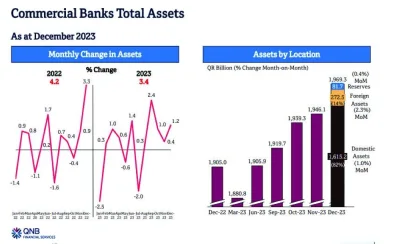Qatar’s trade credit risk – a measure of private sector repayment risk – is very low by regional standards, Oxford Economics has said in a report.Under its methodology, Qatar’s trade credit risk is at 3.0, compared with the regional average of 6.1, Oxford Economics said in its country report.The main factors underpinning this rating are macroeconomic stability, the credible and well-established exchange rate regime, robust growth, very high GDP per capita, and a healthy, well-developed banking sector.“Higher oil prices will likely support bank liquidity despite rising exposure to construction and real estate and persistent foreign funding risk,” Oxford Economics noted.The sovereign credit risk score under Oxford Economics’ data-driven methodology is 3.1, well below the Mena average of 4.4. The score reflects Qatar’s sky-high per capita incomes, large government reserves, strong external finances, and political stability.The budget deficit in 2017 was temporary, returning to surplus in 2018. But it began to narrow again in 2019 and, due to the slump in oil and gas prices, moved into deficit of 2.1% of GDP in 2020.The balance returned to surplus in 2021, with surpluses of 10.4% and 6.3% of GDP in 2022 and 2023, respectively, amid supportive oil and gas revenues.“We forecast it will narrow to 4.5% of GDP this year,” Oxford Economics said.The main rating agencies downgraded Qatar to AA-/Aa3 in response to the regional dispute in 2017. Given ties are restoring and public finances are improving, the ratings are back on an upward trajectory.Moody's recently raised the rating to ‘Aa2’, while S&P upgraded its rating to ‘AA’. An upgrade from Fitch is likely to follow given the positive outlook on its rating, Oxford Economics noted.Under its methodology, exchange rate risk is now 1.7, lower than six months ago and well below the Mena average of 4.2.The stronger US dollar has supported the dollar-pegged Qatari riyal at QR3.64. Oxford Economics thinks there is only a minor chance of de-pegging in the near to medium term.The low risk score reflects the authorities’ long-standing commitment to the US dollar peg, as well as large foreign exchange reserves.In 2020, risk rose when the current account shifted into deficit, but the score improved as the current account shifted back to surplus in 2021, as exports recovered and oil and gas prices rebounded from 2020 lows.“The surplus halved in 2023 but remained wide at 13.5% of GDP. We project a narrower surplus of 11.2% of GDP this year,” Oxford Economics added.

Pratap John
Pratap John is Business Editor at Gulf Times. He has mainstream media experience of nearly 30 years in specialties such as energy, business & finance, banking, telecom and aviation, and covered many major events across the globe.
Most Read Stories























